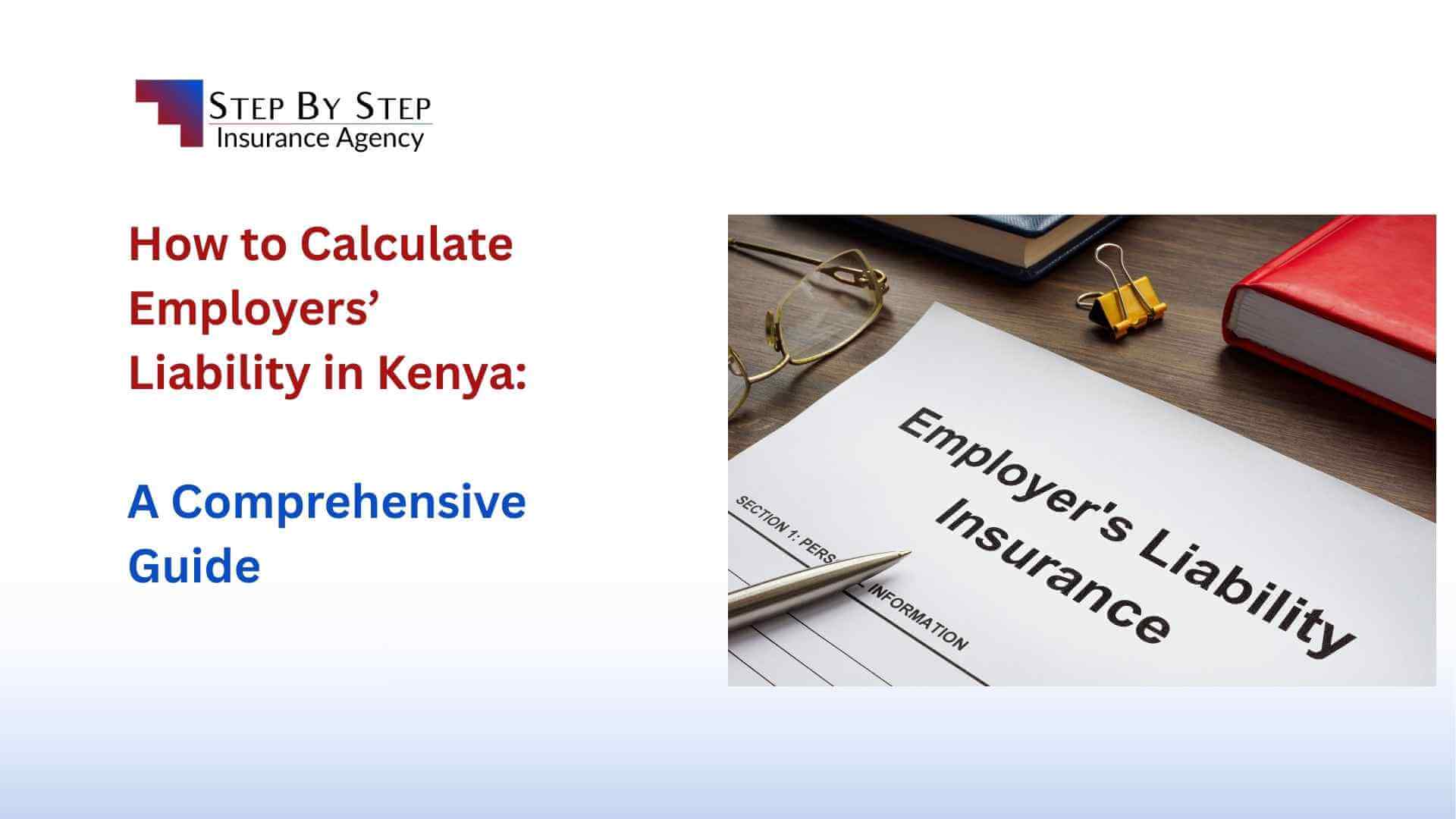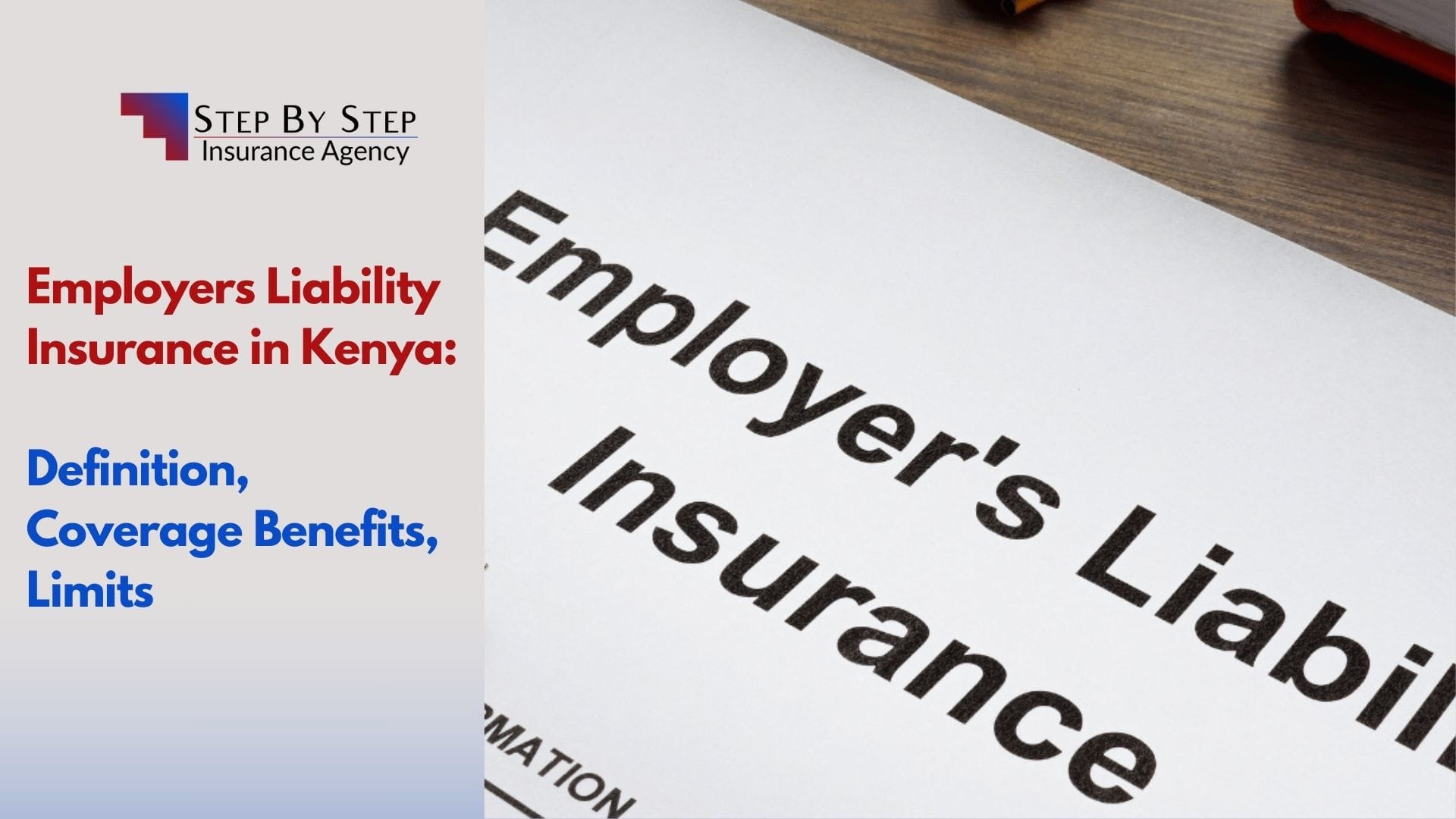Employers Liability Insurance for High-Risk Industries in Kenya: A Deep Dive
Kenya’s high-risk industries, construction, manufacturing, and mining are not only pillars of economic development but also environments with heightened workplace hazards.
These sectors are critical in driving the nation’s infrastructure expansion, industrial growth, and resource extraction efforts.
However, they present significant risks to employee health and safety, including accidents, occupational diseases, and fatalities.
For businesses operating in such industries, safeguarding employees isn’t just a legal requirement under Kenyan labor laws; it is also a moral responsibility and a critical aspect of risk management.
Employers Liability Insurance provides a safety net, ensuring that employees injured or affected by workplace hazards receive adequate compensation while shielding businesses from financial and legal liabilities.
The dynamic and often unpredictable nature of high-risk industries intensifies the need for such coverage.
Heavy machinery, hazardous materials, and high-altitude work are just some of the dangers that make these workplaces prone to accidents.
Additionally, stringent regulatory oversight and the possibility of litigation emphasize the importance of having robust insurance solutions tailored to these unique risks.
Investing in Employers Liability Insurance not only fulfills statutory obligations but also strengthens employer-employee relationships.
By prioritizing workers’ welfare, companies can foster trust and loyalty while mitigating potential financial disruptions.
This insurance serves as a strategic asset, enabling high-risk industries to continue operating efficiently, even when faced with unforeseen challenges.
What is Employers Liability Insurance
Employers Liability Insurance is a type of insurance policy designed to protect employers from financial losses and legal liabilities that may arise if an employee suffers an injury, illness, or death while performing their job.
It provides coverage for claims brought by employees or their families for workplace-related incidents, ensuring that businesses comply with labor laws and maintain financial stability in the event of such claims to protect against financial losses and legal claims arising from workplace incidents.
High-Risk Industries in Insurance Terms
In insurance, high-risk industries refer to sectors where the likelihood of accidents, injuries, property damage, or financial losses is significantly higher than average due to the nature of their operations.
These industries often require specialized insurance policies or higher premiums to mitigate the elevated risks associated with their activities.
Characteristics of High-Risk Industries
High-risk industries are defined by the inherent dangers present in their daily operations, posing significant threats to employees, property, and businesses.
These industries often involve hazardous materials, heavy machinery, complex processes, and high-stakes environments that increase the likelihood of accidents, injuries, or financial losses.
Sectors like construction, manufacturing, mining, and healthcare are prime examples, as they require stringent safety measures and specialized training to manage risks effectively.
1. Hazardous Working Conditions:
Industries where workers are exposed to physical, chemical, or biological hazards regularly (e.g., construction and mining).
2. Heavy Equipment Usage:
Operations require the use of heavy machinery or vehicles, which increases the likelihood of accidents (e.g., manufacturing, agriculture).
3. Exposure to Environmental Risks:
Sectors dealing with natural disasters, pollution, or high environmental impact (e.g., oil and gas, forestry).
4. High Public Liability Risks:
Industries where operations pose risks to the public or third parties (e.g., aviation, transportation).
5. Financial Sensitivity:
Sectors where financial errors or data breaches can lead to catastrophic losses (e.g., financial services, IT).
Here’s an overview of these High-Risk Industries:
1. Construction:
Frequent workplace accidents, falling debris, and heavy machinery use make this industry particularly high-risk.
2. Mining:
Explosions, collapses, and exposure to toxic substances present significant risks.
3. Oil and Gas:
Drilling, refining, and transportation involve fire hazards, spills, and environmental risks.
4. Healthcare:
Medical malpractice and exposure to infectious diseases pose operational and liability challenges.
5. Transportation and Logistics:
High accident rates due to road and vehicle use make this sector prone to claims.
6. Manufacturing:
Workers in factories often handle hazardous chemicals, sharp tools, and high-temperature equipment, increasing the likelihood of workplace injuries.
Why Employers Liability Insurance is Crucial in High-Risk Industries
In high-risk industries like construction, mining, and manufacturing, workplace hazards are a daily reality. Employees face increased exposure to accidents, injuries, and occupational illnesses due to the nature of their work environments.
Employers in these sectors bear a significant responsibility to ensure the safety and well-being of their workforce.
Employers Liability Insurance acts as a vital safeguard, providing financial protection for businesses against claims arising from workplace injuries or illnesses that are not covered under standard workers’ compensation policies.
This coverage is particularly important in industries where the likelihood of incidents is higher, offering a safety net that protects both employees and employers.
1. Legal Protection:
Employers in high-risk industries are legally obligated to provide a safe working environment. In case of non-compliance or incidents, this insurance safeguards businesses from lawsuits filed by injured employees or their families.
2. Financial Coverage:
High-risk environments amplify the chances of costly accidents. Employers Liability Insurance absorbs these costs, covering medical expenses, compensation claims, and legal fees.
3. Reputation Management:
Accidents in these industries can tarnish a company’s reputation. Timely compensation backed by insurance demonstrates responsibility and care for workers.
Key Benefits for High-Risk Industries
Employers Liability Insurance provides crucial protection for businesses in high-risk industries such as construction, manufacturing, and mining.
The key benefits include financial protection against workplace accidents, compliance with legal obligations, and the safeguarding of company assets from liability claims.
These industries face unique risks, and having the right insurance ensures that both the business and employees are covered in case of unforeseen events, promoting a safer, more secure work environment.
- Comprehensive Employee Coverage: Offers financial security to employees who suffer injuries, illnesses, or disabilities due to their work environment.
- Customizable Plans: Policies can be tailored to cover industry-specific risks, such as chemical exposure in manufacturing or cave-ins in mining.
- Peace of Mind for Employers: Protects businesses from unforeseen liabilities, enabling them to focus on growth and productivity without fear of financial setbacks.
Challenges in High-Risk Industries
High-risk industries face unique and complex challenges due to the hazardous nature of their operations.
These challenges range from ensuring workplace safety and managing compliance with strict regulations to mitigating financial risks and addressing labor-related concerns.
Without proactive strategies and adequate insurance coverage, businesses operating in high-risk sectors can experience significant operational disruptions and financial liabilities.
Despite its importance, uptake of Employers Liability Insurance in high-risk industries faces hurdles such as:
- High Premiums: Insurers charge more for high-risk sectors due to the elevated likelihood of claims.
- Low Awareness: Many employers, especially in informal sectors, are unaware of the importance and benefits of this insurance.
- Complex Claims Processes: Lengthy and intricate procedures discourage businesses from adopting these policies.
- Regulatory Non-Compliance: Some employers fail to meet legal safety standards, further complicating insurance claims.
Solutions to Boost Adoption
To ensure greater adoption of Employers Liability Insurance in high-risk industries, businesses must overcome existing barriers such as lack of awareness, perceived high costs, and complexity in policy terms.
Solutions include enhancing education and awareness, offering more affordable and flexible insurance plans, and simplifying the claims process.
- Industry-Specific Education: Conduct workshops and campaigns tailored to construction, manufacturing, and mining sectors to highlight the benefits of Employers Liability Insurance.
- Flexible Payment Plans: Introduce installment-based premium structures to make policies affordable for small and medium-sized enterprises (SMEs) in high-risk sectors.
- Policy Customization: Offer tailored policies addressing the unique risks of each industry.
- Streamlined Claims Processes: Simplify claims procedures with digital tools and faster settlements to build trust among employers.
Conclusion
Employers Liability Insurance is not just a legal obligation but a vital shield for businesses operating in Kenya’s high-risk industries.
It protects both employers and employees from financial hardship, ensuring smooth business operations and enhanced workplace morale.
For businesses in construction, manufacturing, or mining, the stakes are too high to overlook this crucial coverage.
Identifying and addressing these challenges is crucial to sustaining productivity and protecting employees.
By addressing these key challenges, industries like construction, manufacturing, and mining can benefit from stronger insurance coverage, better employee safety, and financial stability, ultimately fostering a safer and more resilient work environment.
Step By Step Insurance offers tailored Employers Liability Insurance solutions to meet the specific needs of high-risk industries. Contact us today to secure your business and workforce against uncertainties.
#EmployersLiabilityInsurance #HighRiskIndustries #KenyaInsurance #WorkplaceSafety #StepByStepInsurance






